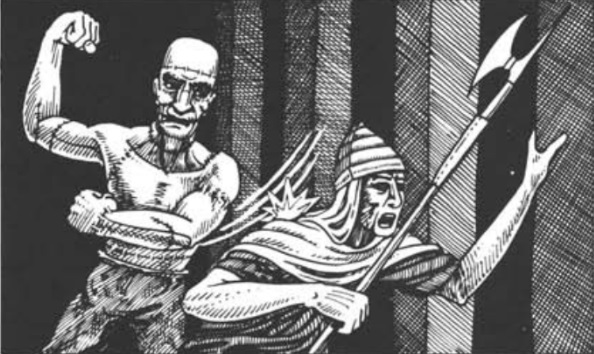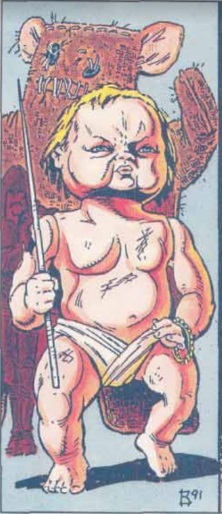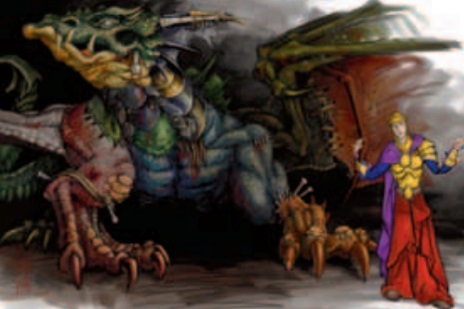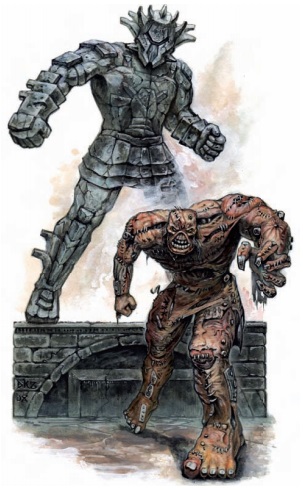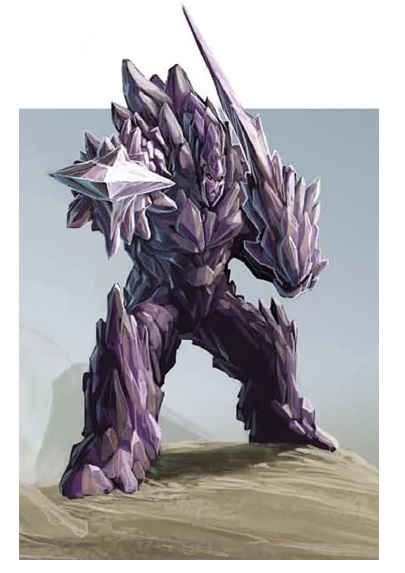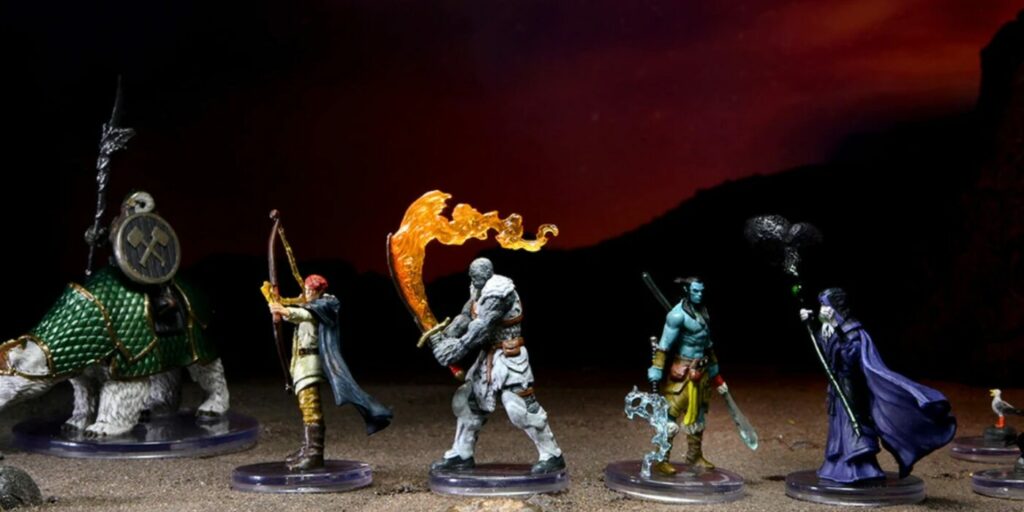Monster Spotlight: Don’t Be So Golem
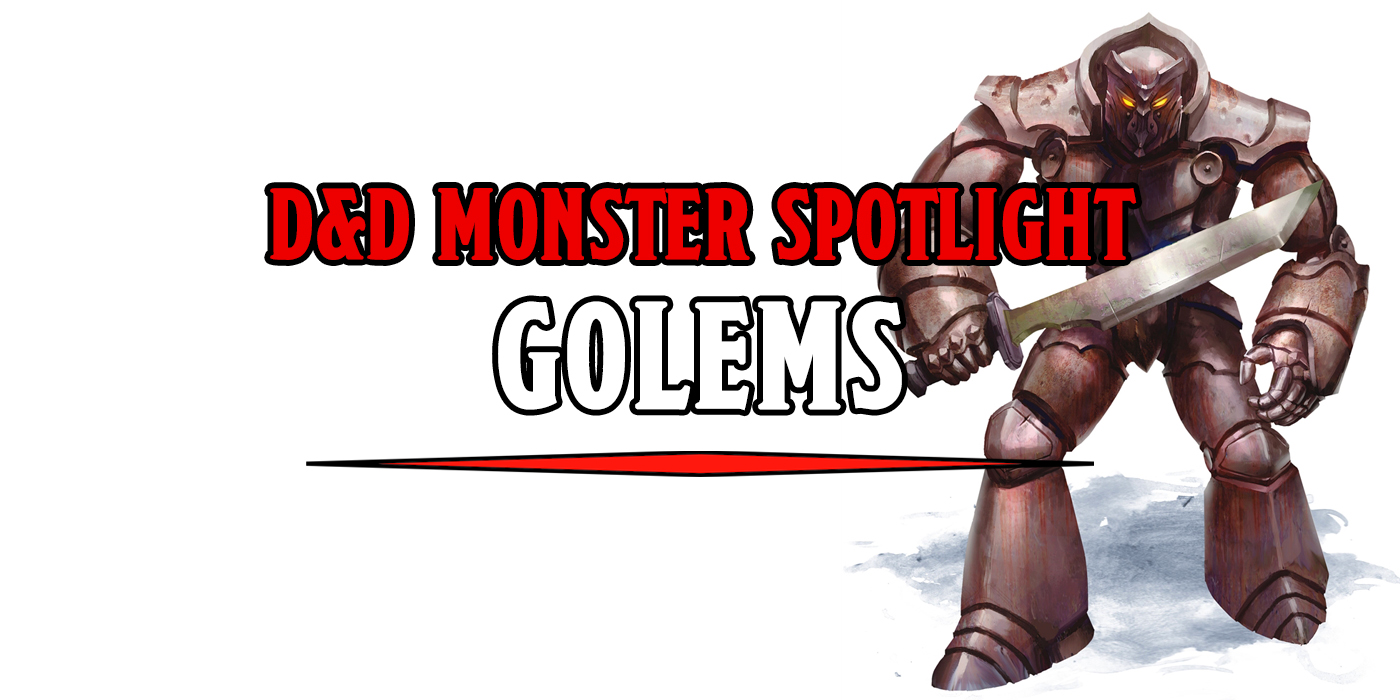
Rare, difficult to create, weird, and most varied monsters in D&D lore, these are some of the strangest golems you can encounter.
Borrowed from Jewish mythology, golems in D&D are almost entirely unrecognizable from their mythological counterparts. According to folklore, golems were creatures made of clay or mud and brought to life. They were truly neutral beings, created to follow the instruction of their creators. Often they were associated with positive feelings such as hope or community as well as negative ones. While the D&D golem shares many of these same attributes at their core, they took a sharp left turn away from their mythological inspiration.
Golems first appeared in the 1975 supplement, Greyhawk, and have since become one of the most widely varying monsters in D&D with hundreds of different kinds existing withing the pages of the various monster manuals and supplemental texts. There are so many that giving a general overview of golems through the editions would be a fools errand. So I decided to settle for a much more reasonable mission: my favorite varieties of golem through the years.
First Edition and the Flesh Golem
The first edition golems are comparatively vanilla next to to some of their younger siblings. At their most basic, they are monsters created from natural material and brought to life with “ultra-powerful spells and elemental forces.” The Flesh Golem is the stand out to me, moving away from the classic depiction of beings as made of clay or earth and instead creating a D&D version of Frankenstein’s monster. Like all golems they are created by a powerful magic user and follow their creators simple commands. But for each turn of melee combat that the Flesh Golem engages in there is a small cumulative chance that the it will go berserk and attack everything in sight at random. This presumably, could include its creator. They are also immune to normal weapons and all magic attacks that aren’t fire or cold based, and are regenerated by lighting magic.
Second Edition and the Doll Golem
Second edition has so many incredible varieties that I truly had a hard time choosing one. But I would have been remiss to ignore the Doll Golem. At 1 foot tall, it’s considered a tiny monster and doesn’t do quite as much damage as some of the other golem varieties. But they make up for it in movement and the potential psychological damage of being attacked by a children’s toy come to life. Their features are described as “twisted and horrific” and they mainly attack by launching at a victim and biting them. This causes the afflicted person (assuming they fail their save roll) to laugh uncontrollably. On their own one of these dolls probably wouldn’t be that bad for even a first level adventurer, but one of these working with a larger enemy or even a swarm of Doll Golems could very quickly become the stuff of nightmares.
Third Edition and the Dragonflesh Golem
Dragonflesh Golems are a much more powerful version of the Flesh Golem. Sometimes called Drolems, they are created from parts of dead dragons sewn together is a mismatched patchwork of rotting flesh. Living dragons hate Drolems, making every effort to attack and kill them on sight. Usually even hunting down its creator immediately after. Drolems can remember more commands than Felsh Golems, but cannot think for themselves and must follow commands to the letter. Even if it means putting their creator in mortal peril if a command has been worded vaguely. Drolems have the same strengths and weaknesses as Flesh Golems when it comes to being attacked, but are much more powerful and inspire terror for 5d6 rounds. I can honestly think of few things more terrifying than encountering Frankenstein’s monster’s dragon.
Fourth Edition and the Stone Golem
Second Edition may have had too many interesting options. But fourth brings it back to the basics with just the Flesh and Stone Golems. 4E’s version are very similar to each other with the same general background, description and many of the same attacks. Stone Golems are a little tougher though. With slightly higher stats across the board they have the ability to “death burst,” exploding into a collection of jagged stones when reduced to 0 hit points. Some interesting varieties are missing now, but I wouldn’t want to end an encounter with a “death burst.”
Fifth Edition and the Crystal Golem
The Crystal Golem is an interesting play on the standard Stone monster. They use most of the same attributes and traits. But this Crystal variety can understand Gith, and has magic illumination so bright that anyone within 10 feet must succeed on a wisdom saving throw or be temporarily blinded. They’re introduced in Dungeon of the Mad Mage with a blink-and-you’ll-miss-it blurb. These are the underappreciated standout of the 5E Golems.
What’s your favorite kind of Golem? Which one do you think would sit in a cave with ‘their precious?’ What varieties would you like to see highlighted next time? Let us know in the comments!
Happy Adventuring!

